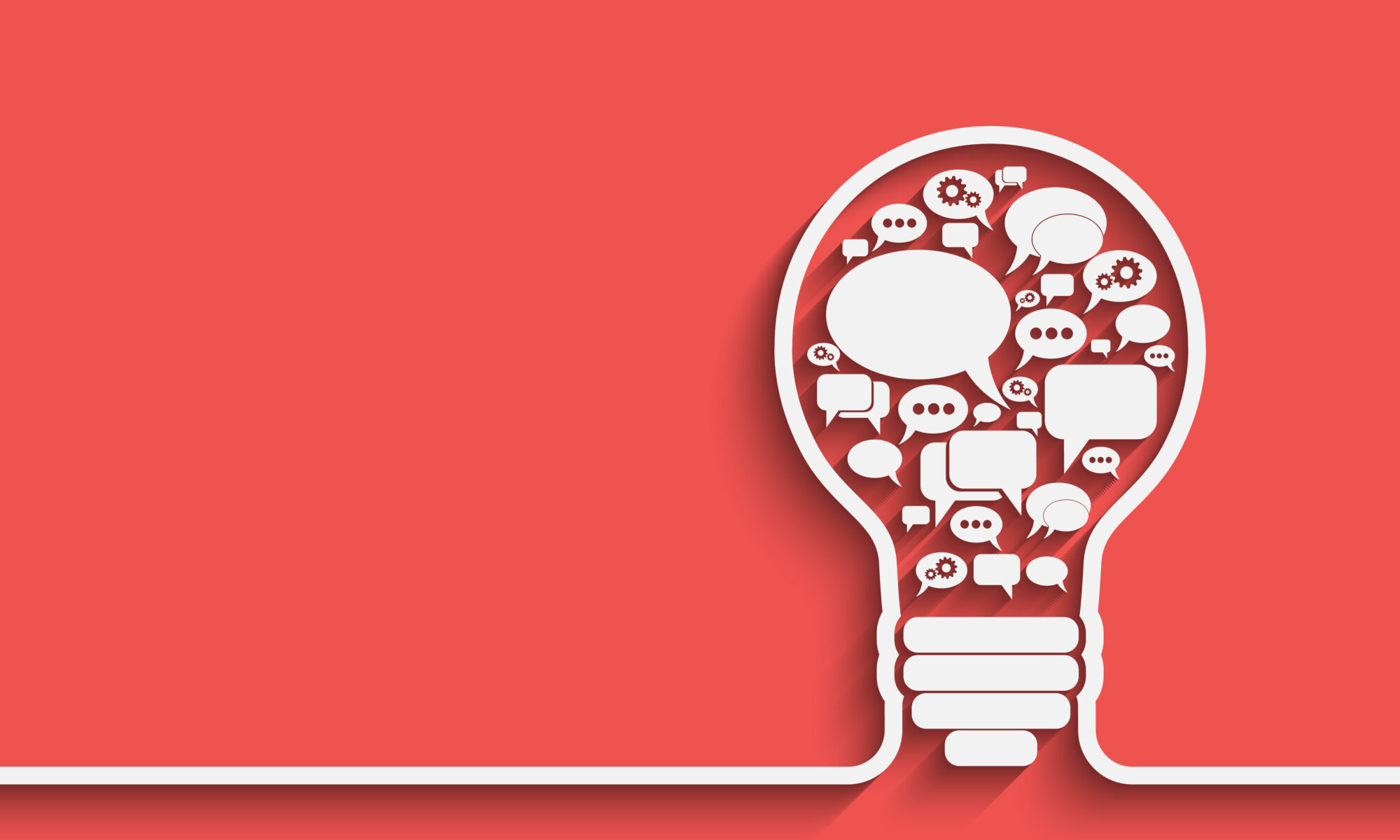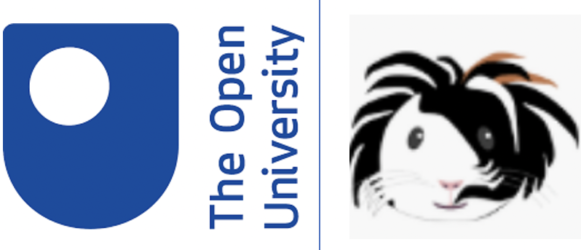by Emily Dowdeswell and Sarah Huxley
When we were asked to write something about our presentations, we thought about conventions of academic representation, and of ways to elicit fun in our own process of reflecting upon the experience of presenting with/in a digital conference. Focusing on the conference title “Research Re(imagined)”, how could our writing be a provocative contribution for change and growth (Koro-Ljungberg & Maclure, 2013)? A part of wider conversations in progress around the need to reimagine academic conference in a time of intersecting pandemic and climate crises.
Being with/in digital presentation
How might we convey the lived experience of doing digital presentations. This is different from the fixed content of the presentation itself. Whilst completing her doctoral research, India Amos of the School of Health and Society at the University of Salford, explored ways to ‘carry forward’ human experience if human experience is conceptualised as ‘more than words can say’ (Amos, 2019). She adopted found poetry to bring the meaning of her research experience alive. Poetry can capture complexity, heighten creativity and invite reflexivity (Pithouse-Morgan et al., 2014). Monica Prendergast, professor of drama and theatre education at the University of Victoria, advocates for poetic inquiry, and particularly found poetry (e.g. Prendergast, 2006), as a way of doing qualitative research differently. So, could found poetry be created from presentation texts as an arts-based approach to describing the complexity of doing digital presentations? In order to discover and communicate that experience in a multidimensional, evocative and more accessible way (Cahnmann, 2003).
Chop-chop, Cut-cut
Found poetry is created by taking words and phrases from other sources and reframing them to convey a different meaning to the reader. Sometimes described as literary or poetic collage, it also references the dadaism of Marcel Duchamp, and reimagines the communication of meaning in ways that are unexpected. Natalie Franks has a very useful account here if you are interested in having a go. Creating poetry to represent research experience is a non-linear process that involves physically or electronically cutting and pasting selected words and phrases together (Pithouse-Morgan et al., 2014). The process itself reframes research presentation away from a description of fixed findings, towards the unfolding of ambiguity, tension and precarity. The process highlights that our understanding is always partial, contingent and subject to change (Pithouse-Morgan et al., 2014).
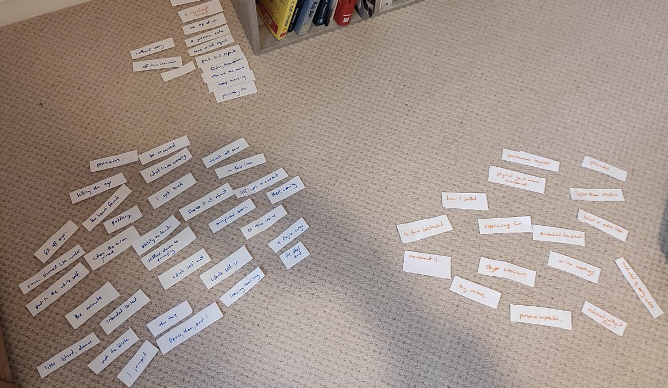
Photo 1: In blue, words/phrases from Naomi Shihab Nye’s poem, and in orange, text from Sarah’s PowerPoint.
So, having discussed our approach, Sarah went off and scribbled, chopped, and collaged. We had agreed our theme: the lived experience of digital presentations, and her focus was to find a poem that represented her experience of ‘disassociation and reconnection’. A quick search surfaced several articles about dissociating as an embodied response to significant trauma. It’s a serious condition, and some common signs of being in a dissociate state can be: mind wandering; a sense of the world not being real; and watching yourself from seemingly outside of your body.
Whilst we most certainly did not experience a trauma induced experience of disassociation during our digital presentations, we did jostle alongside some of these sensations. We share a vignette of Sarah’s memories as an example of what we mean:
“I recall saying ‘Um’ – a sound I too frequently use to hold the space, as I search for the verbalisation of my thoughts. Immediately I became aware of my self-critic: the sound reverberated, and I was suddenly watching myself give the presentation. As someone behind – looking at the body present, and then, the digital screen. This sensory moment was transitory, and I was soon drawn back into re-connecting with the movement to the next slide, drawn into the digital visualisation of text and colour. Slides – a packaged extension of thoughts being shared with others, all neatly placed on a digital screen. It felt good. I was re-plugged back into the virtual experience”.
In reworking our presentations, through remembered sensations, and poetry that resonates with our experience, we rethink digital presentation as “something more complex and creative, even agentic” (Banerjee & Blaise, 2018). “A digital hokey cokey”, created by Sarah from her slide presentations, sensations and the poem ‘The Whole Self – by Naomi Shihab Nye’, seeks to carry forward our experience of doing presentations. In drawing on poetic inquiry, we intentionally adopt a method that is partial, serious, playful and imperfect (Banerjee & Blaise, 2018).
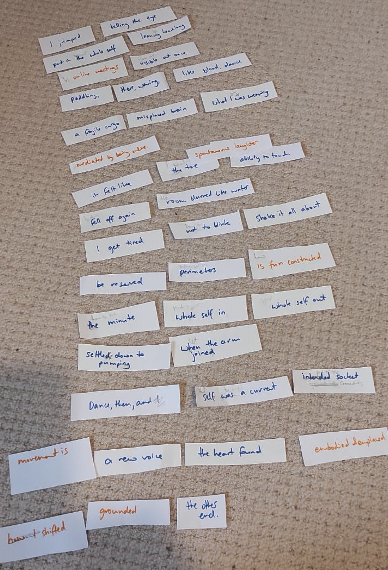
Photo 2: Bringing different possible versions of the found poem together.
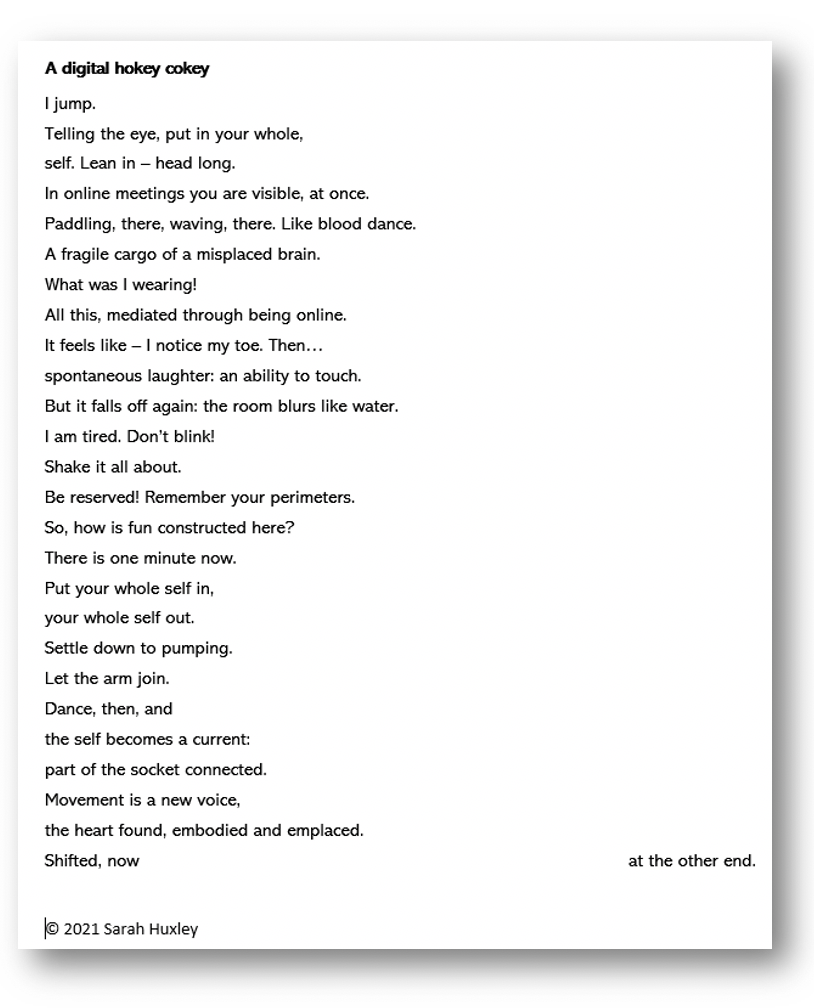 Figure 1: A digital hokey cokey by Sarah Huxley
Figure 1: A digital hokey cokey by Sarah Huxley
[Audio] recording of the poem, read aloud by Sarah Huxley
Moments of Re(connection)
We were curious to understand more about the potential for collective poetic inquiry to engage with the polyvocality (Pithouse-Morgan et al., 2014) within our educational conference space. We have (re)presented our digital presentations using found poetry, in order to share our experience as a poetic performance, evoking the diverse voices of body, wire, screen, key, soundboard, pixel, text and image. Did we succeed in carrying forward the collective, multifaceted aspects of digital conferencing? Did our approach capture the risk we feel as we move away from familiar forms of conference presentation? As argued forcefully before, poetic inquiry can push us “to the precarious point of confronting and publicly revealing ambiguities in what and how we come to know” (Pithouse-Morgan et al., 2014, 167). Our approach to representing our research is a risk, a provocation to reimagine how research experience can be shared, which we hope aligns with the goals of the conference itself. It is an approach that also seeks to disrupt conceptualisations of digital presentation as known, familiar and inert (Koro-Ljundberg & Maclure, 2013). We have paused to wonder what is possible if we reconfigure and reimagine our digital presentation experiences differently. We now are left to wonder what might be possible if we make room for fun to entangle readers in different and unknowable ways (Banerjee & Blaise, 2018)?
References
Amos, I. (2019). “That’s what they talk about when they talk about epiphanies”: An invitation to engage with the process of developing found poetry to illuminate exceptional human experience. Counselling & Psychotherapy Research 19(1), pp.16-24.
Banerjee, B. & Blaise, M. (2018). An unapologetic feminist response. Research in Education 101(1), pp.17-24.
Cahnmann, M. (2003). The craft, practice, and possibility of poetry in educational research. Educational Researcher, 32(3), pp. 29-36.
Dowdeswell, E. (2021). (Re)imagining learning and research: invitations to create and reflect. WELS Postgraduate Researchers Conference. Research re(imagined): (post)pandemic perspectives. 20th March 2021.
Huxley, S. (2021). Changing method: how I shifted from a ‘blended’ to fully online ethnography. WELS Postgraduate Researchers Conference. Research re(imagined): (post)pandemic perspectives. 20th March 2021.
Huxley, S. (2021). A digital hokey cokey.
Shihab Nye, N. (1995). The Whole Self. From Words Under Words – Selected Poems. 4th Edition.
Koro-Ljungberg, M. & Maclure, M. (eds) (2013). Special issue: Data. Cultural Studies <-> Critical Methodologies 13(4), pp. 219–372.
Pithouse-Morgan, K., Naicker, I., Chikoko, V., Pillay, D., Morojele, P., & Hlao, T. (2014). Entering an ambiguous space: Evoking polyvocality in educational research through collective poetic inquiry. Perspectives in Education 32(4), pp. 149-170.
